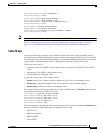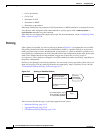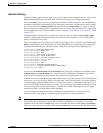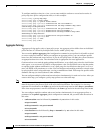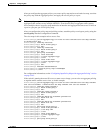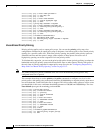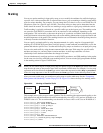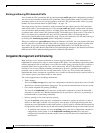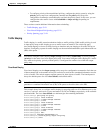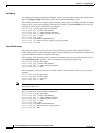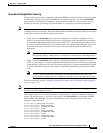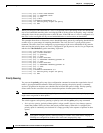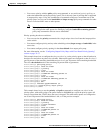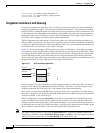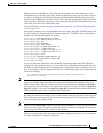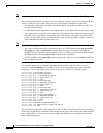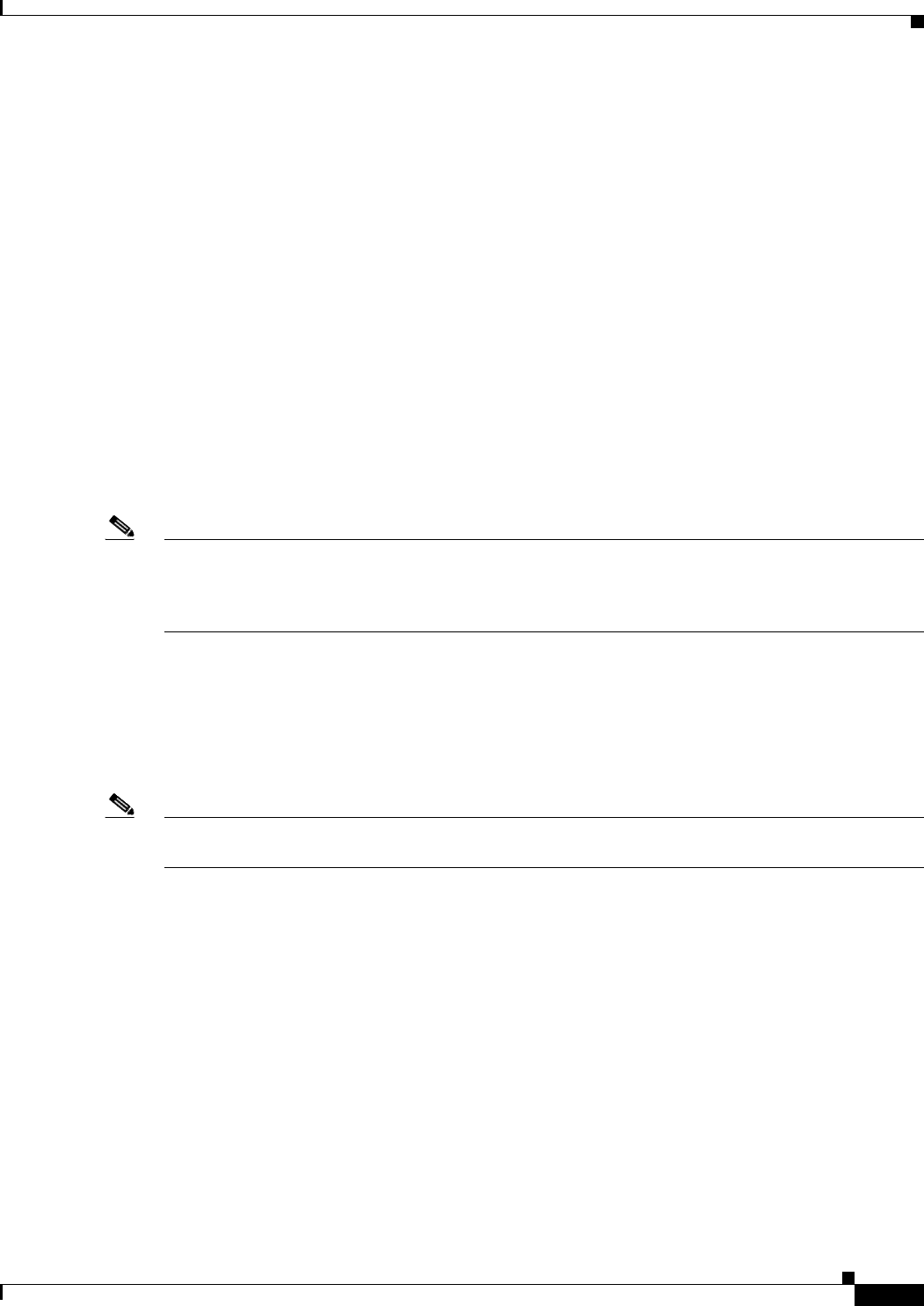
33-21
Cisco ME 3400 Ethernet Access Switch Software Configuration Guide
OL-9639-06
Chapter 33 Configuring QoS
Understanding QoS
–
To configure priority with unconditional policing, configure the priority queue by using the
priority policy-map class configuration command and the police policy-map class
configuration command to unconditionally rate-limit the priority queue. In this case, you can
configure the other traffic classes with bandwidth or shape average, depending on
requirements.
These sections contain additional information about scheduling:
• Traffic Shaping, page 33-21
• Class-Based Weighted Fair Queuing, page 33-23
• Priority Queuing, page 33-24
Traffic Shaping
Traffic shaping is a traffic-control mechanism similar to traffic policing. While traffic policing is used
in input policy maps, traffic shaping occurs as traffic leaves an interface. The switch can apply
class-based shaping to classes of traffic leaving an interface and port shaping to all traffic leaving an
interface. Configuring a queue for traffic shaping sets the maximum bandwidth or peak information rate
(PIR) of the queue.
Note You cannot configure traffic shaping (shape average) and CBWFQ (bandwidth) or priority queuing
(priority) for the same class in an output policy map. You cannot configure traffic shaping for a traffic
class when strict priority (priority without police) is configured for another class within the output
policy-map.
Class-Based Shaping
Class-based shaping uses the shape average policy-map class configuration command to limit the rate
of data transmission as the number of bits per second to be used for the committed information rate for
a class of traffic. The switch supports separate queues for three classes of traffic. The fourth queue is
always the default queue for class class-default, unclassified traffic.
Note In the Cisco ME switch, configuring traffic shaping also automatically sets the minimum bandwidth
guarantee or committed information rate (CIR) of the queue to the same value as the PIR.
This example shows how to configure traffic shaping for outgoing traffic on a Fast Ethernet port so that
outclass1, outclass2, and outclass3 get a maximum of 50, 20, and 10 Mbps, respectively, of the available
port bandwidth. The class class-default at a minimum gets the remaining bandwidth.
Switch(config)# policy-map out-policy
Switch(config-pmap)# class classout1
Switch(config-pmap-c)# shape average 50000000
Switch(config-pmap-c)# exit
Switch(config-pmap)# class classout2
Switch(config-pmap-c)# shape average 20000000
Switch(config-pmap-c)# exit
Switch(config-pmap)# class classout3
Switch(config-pmap-c)# shape average 10000000
Switch(config-pmap-c)# exit
Switch(config-pmap)# exit
Switch(config)# interface fastethernet 0/1
Switch(config-if)# service-policy output out-policy
Switch(config-if)# exit



